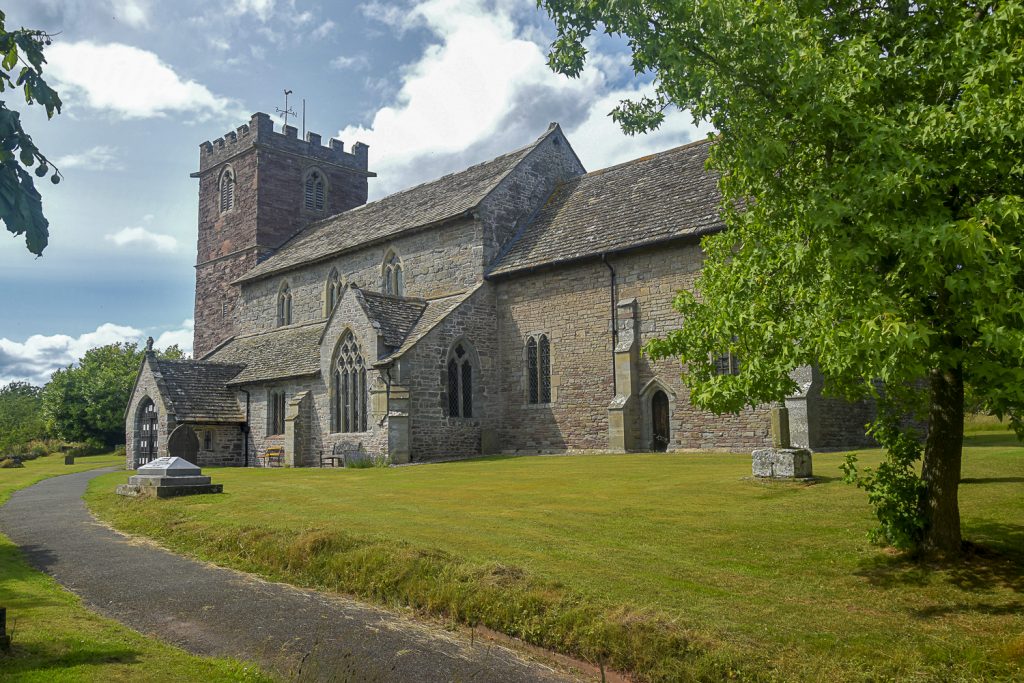
We cannot say how long there has been a Christian church on this site. Apart from some re-used arch stones above the doors, which are of an earlier date, the oldest part of the church is the base of the West Tower, which was built about 1200. The church is Grade 1 listed and a full description of the church is here.
Plan of the church
The picture on the right gives a plan of the current church layout. We also have ‘The Times’ newspaper report of the 1870 restoration.
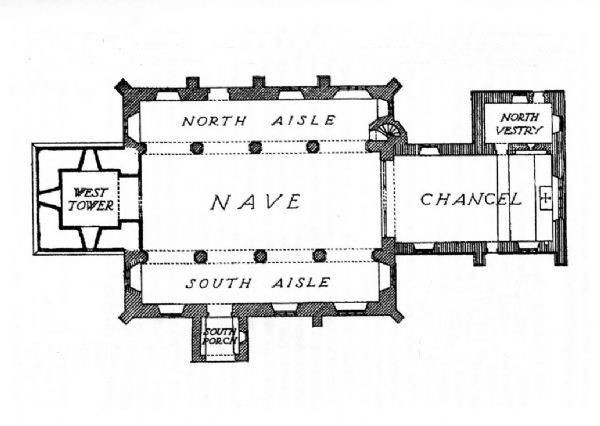
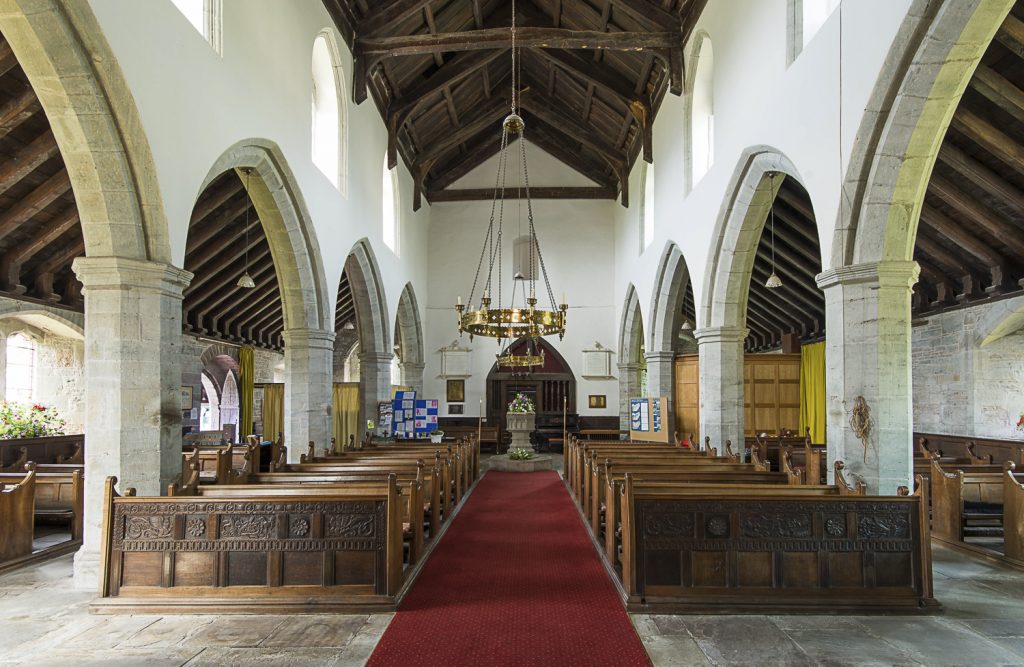
The nave
The nave has arcades of four bays with octagonal columns and there are symmetrical north and south aisles. These were built about 1320-1330 in the episcopate of Bishop Orleton when many Herefordshire churches were rededicated. Apart from the tower therefore, the church belongs to the Decorated or Middle Pointed period. There is a rood loft staircase with the lower doorway in the north aisle.
The nave ceiling
The two eastern bays of the nave roof have boarded ceiling painted in yellow, blue, black and red to imitate square moulded panels. There are bosses at each intersection and a Tudor rose in the middle of each panel. The nave roof is 16th century and has scissor trusses with curved braces.
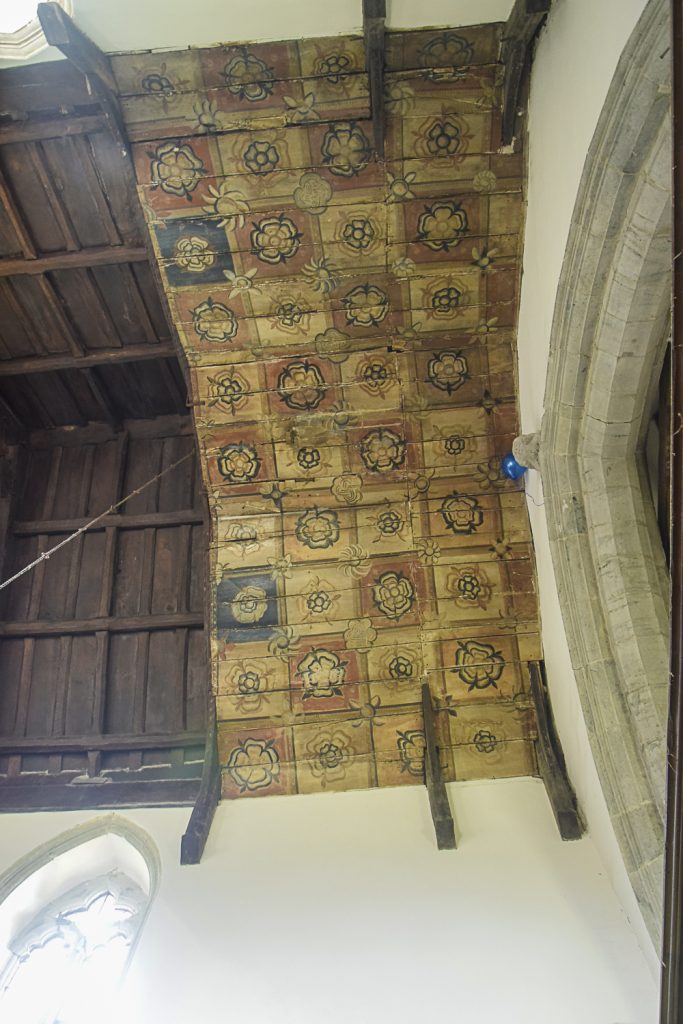
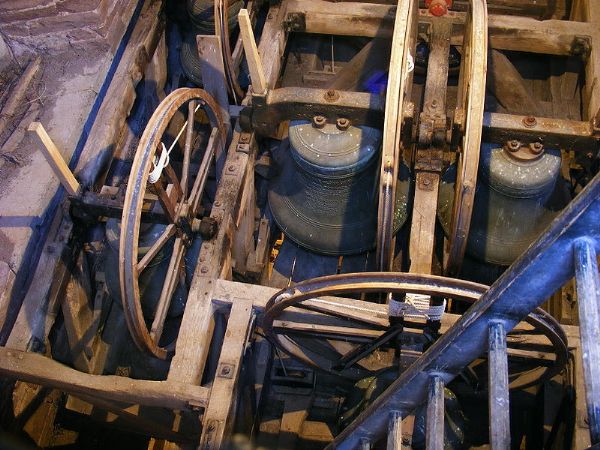
Mears and Stainbank, London, 1930, 4-3-4
Thomas Rudhall, Gloucester, 1773, 5-1-6
Mears and Stainbank, London, 1866, 5-3-14
John Taylor, 2003, 7-1-13
Thomas Rudhall, Gloucester, 1773, 7-2-24
John Taylor, Loughborough, 1960, 11-0-27 in G
The Tower and the bells
The tower is entered by a door in a Jacobean oak screen, which was probably made from a dismantled gallery. On the ground floor of the tower is the bell ringing chamber which has in its four corners great oak posts which pass through the floor of the clock chamber above and carry the weight of the bell cage and the ring of six bells. The upper part of the tower is probably 14th century. The largest bell, the tenor, weighs 11 cwt 27lbs and is inscribed ‘I to church the living call, I to grave do summon all’. The upper part of the tower is probably 14th century.
The fittings of the treble are those supplied by Mears and date from 1930, but the rest of the bells have Taylor fittings from 1960. The Cracked 4th by Thomas Rudhall in 1773 (6-1-25) was recast in 2003, the previous inscription being copied onto the new bell.
The Front Pews
Some 16th century carved oak panelling, possibly also taken from the dismantled gallery, has been incorporated in the front pews. The oak panels are covered with very fine carving, several of the figures being those of dragons and other creatures of that mild and amiable family. On the panels in the pews which abut on the cross aisle there is some very good drapery carving.
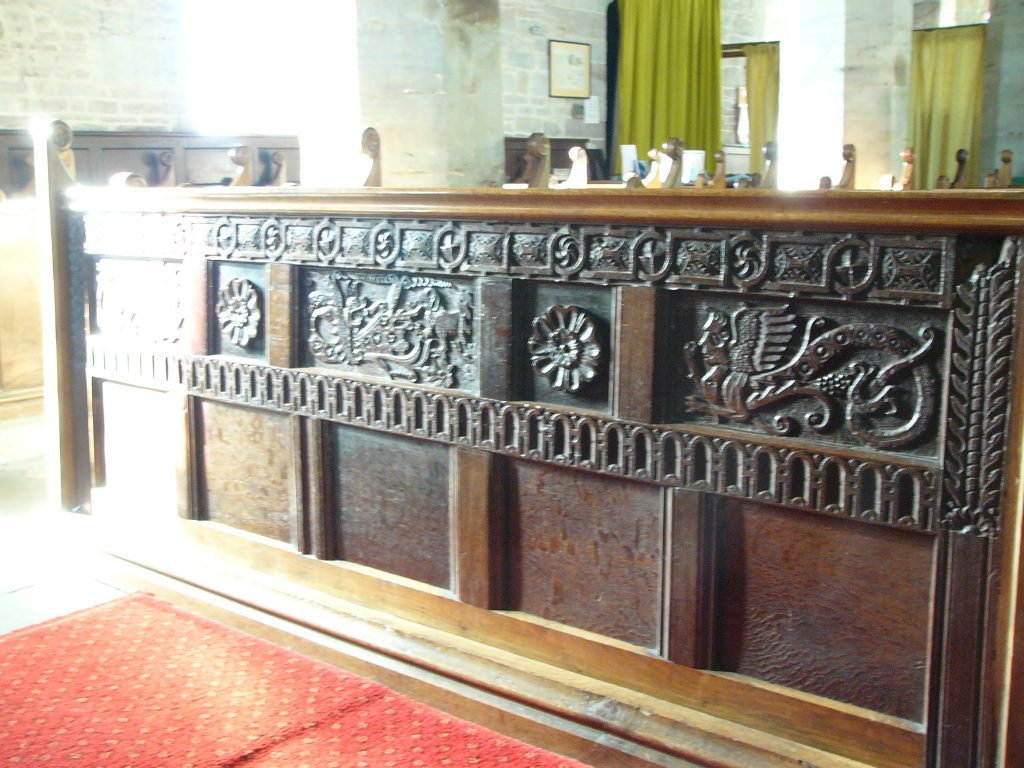
The chancel was rebuilt at the end of the 13th century. It has a geometrical east window and a chancel arch supported on busts with another bust at the apex. In the chancel is a piscine of about 1300 and also a 14th century recess with a squint cut in the wall from the vestry.
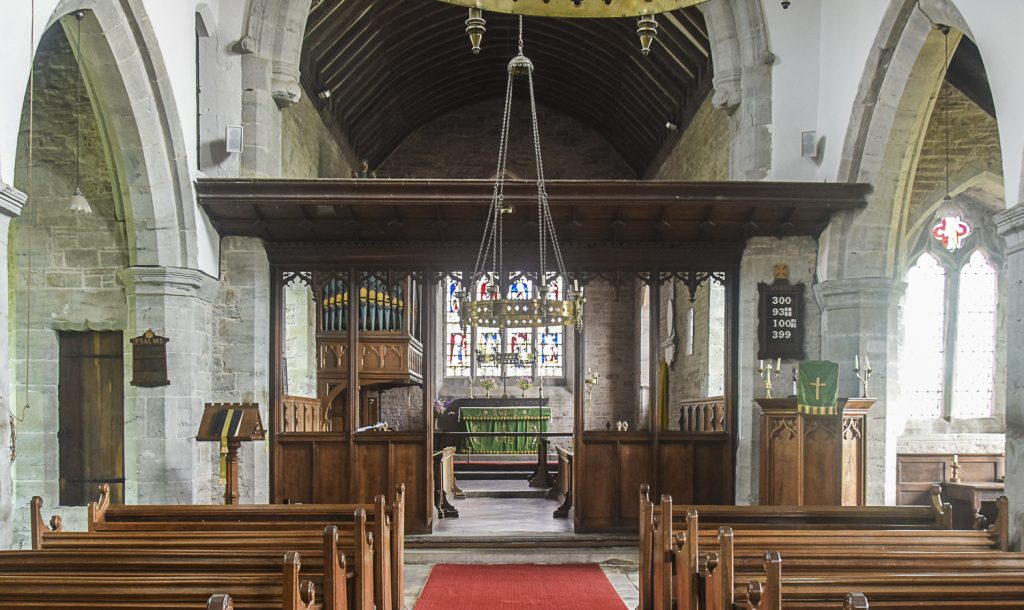
The Organ was made by V.G. Vowles of Bristol. It was donated to the church in 1905 by Grace Hyatt Warner (her husband was vicar from 1877-1918.) It is of a Roosevelt Chest construction – an American design and many of the pipes are very inaccessible which makes it very difficult to tune.
Swell Great
Hohl Flute 8ft Flute 4ft
Satrimonal 8ft Dulciana 8ft
Gemshorn 4ft Clarabella 8ft
Viola de Gamba 4ft Open Diapason 8ft
Swell to Great super
Pedals
Swell to pedals
Great to pedals
Bourdon 16ft
We have documents about the repair and maintenance of the organ going back to 1931 when a new electric blower was fitted for the sum of £45.00. In 1953 the vicar at the time Rev E Norton (1953 -59) wanted to get rid of the organ and replace it with a second-hand Hammond organ. The pipe organ needed £120 spending on it and he felt the shape of it ‘spoilt the beautiful sanctuary.’
He stated in a letter to the firm that he had to approach the PCC and had to find funding from the Diocese. He was obviously not able to achieve this as by 1954 there is a new contract for tuning the organ with Henry Willis & Sons.

However Rev Norton would not sign the contract as the company asked him to provide a ‘keyholder’ – someone to hold the keys down while the tuner works. The vicar said he was unable to do this – ‘can you see your way to sending a keyholder with your tuner and still charging us at the rate of £5.00 per visit.’ The rate for tuning is somewhat higher these days!
In 1958 the organ was valued for insurance purposes at £2675 . In 1958 it was advised by the tuners that the pneumatic motors need releathering. It was 1965 before some if the motors were releatherd but not all as advised because of expense.
The windows
The walls in the clerestory, and the west wall (in which there is an entrance to the tower) are plastered to the lines of the arches and the windows.
On either side of the clerestory there are three two-light windows.
In the east end of the chancel there is a magnificent four-light stained-glass window. The tracery is filled with stained glass with figureheads of angels, etc. The four lights are filled in with figures of St Boniface, St Cuthbert, St Thomas of Hereford, St Augustine, St Maria, St Anna, St Gabriel, and St Maria and child. There are four grounds in imitation of pavement, and perpendicular pillars, all in ornamental painting in the old style. The colouring is extremely rich.

The east window – a picture of each panel in detail can be found here.

The window in the South side of the chancel depicts scenes from the lead up to and the birth of Jesus




In the south aisle there is a fine four-light old window, in the tracery of which there is stained glass on which are represented the emblems of the crucifixion. In the north aisle, opposite to it there is a similar window with stained glass in the tracery representing different coats of arms. In the tracery in the windows in the east walls of the south and north aisles there are stained glass representations of the Virgin Mary and child, and of the Crucifixion, the last being a splendid piece of work.
The stained glass in all these windows was made by Burlison and Grylls, the east window of the chancel being the earliest – c.1870/1. The aisle east windows appear to be copied from 14th century originals.

The South Porch
The south porch is probably about the same date as the nave. The door of nail-studded battens and trellis framing is probably 14th century. The porch now has a modern stained glass window designed and built by one of the parishioners, the late Olive Morgan.


The Preaching Cross in the churchyard
Is a grade 1 listed monument in its own right